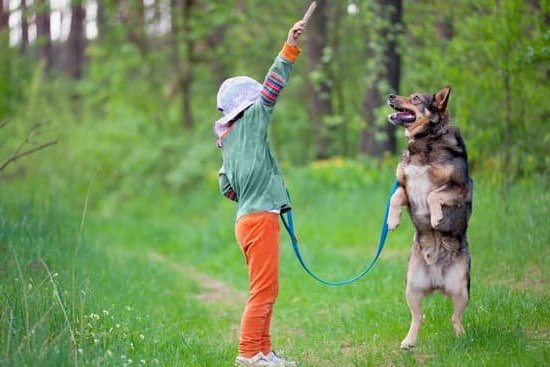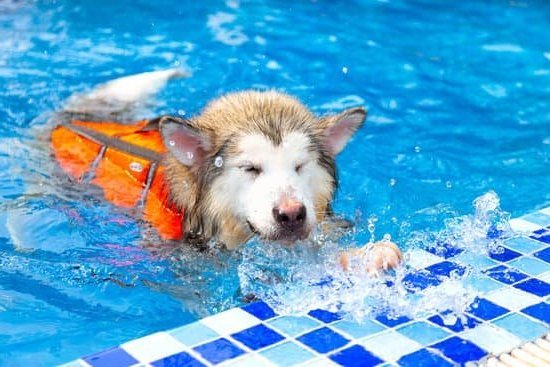Introduction
Training your dog not to pull on walks is a great way to ensure a safe and enjoyable outing for both you and your pup. Teaching your canine companion basic obedience commands, such as walking at your side while on the leash, can be beneficial in increasing safety, preventing injuries and reducing stress. Furthermore, providing consistent training can also help build a meaningful bond between pet parent and pooch as they learn to trust each other. Some key tips to consider when training your dog not to pull on walks include establishing good habits from the start, being consistent with rewards and punishments, and making sure both you and your pup are comfortable.
Identify Techniques for Different Types of Dogs
Training a dog not to pull on leash can take some effort, and there is no “one size fits all” approach – different techniques may be most effective with different types of dogs. Here are some methods to consider depending on the personality of your pup:
For energetic dogs: leash training could combine physical exercise with regular rewards for good behavior. Positive reinforcement can help keep high-energy breeds motivated during walks, such as through the prompting of simple commands like ‘sit’ or ‘stay’ at scheduled intervals throughout the walk. Allowing a few minutes of off-leash fun within an area that is secure from harm (e.g., a completely fenced in backyard) can also be great for releasing pent up energy and reinforcing good behavior when wearing a leash.
For shy dogs: larger areas like parks and wide open spaces can be intimidating for shy pooches. Instead, opt for smaller walks with few distractions at first which will help reduce stress levels without overwhelming them too much. Going easy on the natural excitement which often comes with meeting new people or other animals may also be necessary by using distraction techniques until they start feeling more confident around strangers. Avoiding sudden jerky movements while walking or tugging on the leash yet maintaining an element of control can increase their sense of ease and boost trust in you as their master.
Finally, consistency is key when it comes to training any type of dog; determining a daily routine between feeding times and walks will create an environment in which they know exactly what to expect, helping to decrease anxiety levels and eliminate destructive behaviors from forming along the way.
Identify the Potential Health Benefits of Proper Walking Habits
Proper walking habits can provide a range of health benefits to your dog. When trained, your dog will be able to walk on a loose leash, which allows them to stay better balanced and move more naturally. This helps reduce stress on their joints and ensures they don’t strain their back muscles unnecessarily. Additionally, allowing them to move at a steady pace reduces their heart rate, further reducing strain on the body. Proper walking also encourages correct posture, which helps improve blood circulation throughout the body and keeps muscles strong. Finally, relaxed walking prevents unwanted behaviors such as excessive barking or lunging at other dogs or people, allowing for stress-free walks for both you and your pup.
Establish a Marathon and Snack Reward System
The Marathon and Snack reward system is a great way to train a dog not to pull on walks. Whenever you take your dog on a walk, start by setting realistic goals, such as walking the same route for fifteen minutes without the dog pulling or going off course. If the goal is successfully completed, give your pup a small snack such as a biscuit or treat as positive reinforcement after each successful walk. For longer routes or walks that require more effort from your pet, consider breaking them up into smaller tasks and rewarding them with bigger treats for completing every section of their training program and for lasting longer than initially expected. Additionally, make sure to praise your pup frequently during the walk- positive feedback will keep them from getting bored and wanting to explore too much mid-walk. With time and patience, your pup will understand what behavior is deemed appropriate for walks and which behaviors aren’t tolerated!
Implement Positive Interruptions to Discourage Pulling
One effective way to train a dog not to pull on walks is by using positive interruptions. Positive interruptions involve redirecting the dog’s attention away from the object or behavior that he or she is displaying and instead focusing their attention onto something else. For example, if your dog begins pulling on a walk, you can give them verbal commands to stop (such as “heel” or “leave it”) and then immediately offer them an alternative reward such as treats, toys, or praise when they obey the command. This trains the dog to associate following commands with rewards instead of with punishment, which makes them more likely to comply in the future. Additionally, you may want to practice standing still if your dog pulls while walking. When this happens, ignore it and wait until they back off before continuing the walk. This helps your canine understand that forward motion only occurs when he follows your commands.
Increase Motivation and Interest by Using Variety During Walks
To ensure that your dog is not overly motivated by pulling on walks, it’s important to make sure that they stay interested and engaged with its environment. This can be done in a variety of ways, such as varying the kinds of rewards offered, changing up the length and route of each walk, and allowing your pup ample opportunities to stop and smell the roses! Offer treats as rewards for good behavior during walks, play tug-of-war games at regular intervals, take them down new paths or even offer new toys during their daily stroll. Keeping it interesting will help keep them from becoming bored or over-motivated by certain activities. Additionally, providing positive reinforcement for good behavior during walks – such as sitting when passing other dogs – will encourage good habits and an overall more enjoyable outing.
Explain the Significance of Good Equipment
It is essential to have the right equipment when training a dog not to pull on walks. The appropriate equipment helps keep your pet safe, secure and comfortable during the training process and ultimately makes it easier for your pup to learn which behavior is desired on walks. Good equipment includes a well-fitted collar or harness that distributes pressure evenly across the body, reinforced with a sturdy leash that will last long-term but also provide enough space between you and the canine so they do not feel restricted. Additionally, be sure to have treats on-hand as rewards during the training process. Treats can help keep your pup focused and happy while you are teaching them how to walk properly!
Demonstrate Techniques to Improve Heeling
One effective way to train a dog not to pull on walks is by demonstrating techniques to improve heeling. Heeling is the process of teaching a dog how to walk calmly and obediently while on a leash. This can be taught through repetitive verbal cues, treats, and positive reinforcement. Start by showing your dog the “heel” position, which should include walking at the heeler’s left side with the head and chest in line with the handler’s leg, without any pulling or tugging against the leash. You can also reinforce this command with verbal praise or treats when needed. As training progresses, try slowing down or stopping while giving your pup commands like “stay” or “wait”, again followed by appropriate rewards when they obey these instructions. Gradually increase walking speed as your pup learns to move more calmly, and periodically reward their efforts even on short walks. With patience, consistency and diligent practice this will help you and your pup develop better control over their movements when out for walks together.
Teach Proper Body Language For Interactions
One way to train a dog not to pull on walks is to teach them proper body language for interactions. This may involve consistent and gentle guidance during walks, such as stopping and standing still when the dog pulls, or providing spoken corrections if the dog gets ahead of you. It’s also important to reinforce that pulling will not get them to their destination any faster; in fact, it can slow down the process significantly. Additionally, before beginning a walk, it’s helpful to pause with your dog and have them sit or lie down while remaining attentive with soft eye contact. You should reward desired behaviors when they occur and provide plenty of verbal praise throughout the walk. As they become more comfortable, you can encourage them by training specific cues such as “Let’s Go!” that let your dog know when it is acceptable for them to continue walking and keep an appropriate distance away from you. Finally, take regular breaks during your walks so that both you and your pup can take a break from all their hard work!
Summarize
Training your dog to not pull on the leash while on walks is a beneficial investment of your time. This behavior can be corrected with consistent training and reinforcement. Dogs learn best with positive reinforcement, such as treats, playtime, or praise when they fulfill commands. Training your dog also helps to build a stronger bond between pet and owner, as well as provide a sense of safety due to the trust that is created through communication. Over time, you should see improved results when walking with your dog if you have invested in their personalized training.

Welcome to the blog! I am a professional dog trainer and have been working with dogs for many years. In this blog, I will be discussing various topics related to dog training, including tips, tricks, and advice. I hope you find this information helpful and informative. Thanks for reading!





